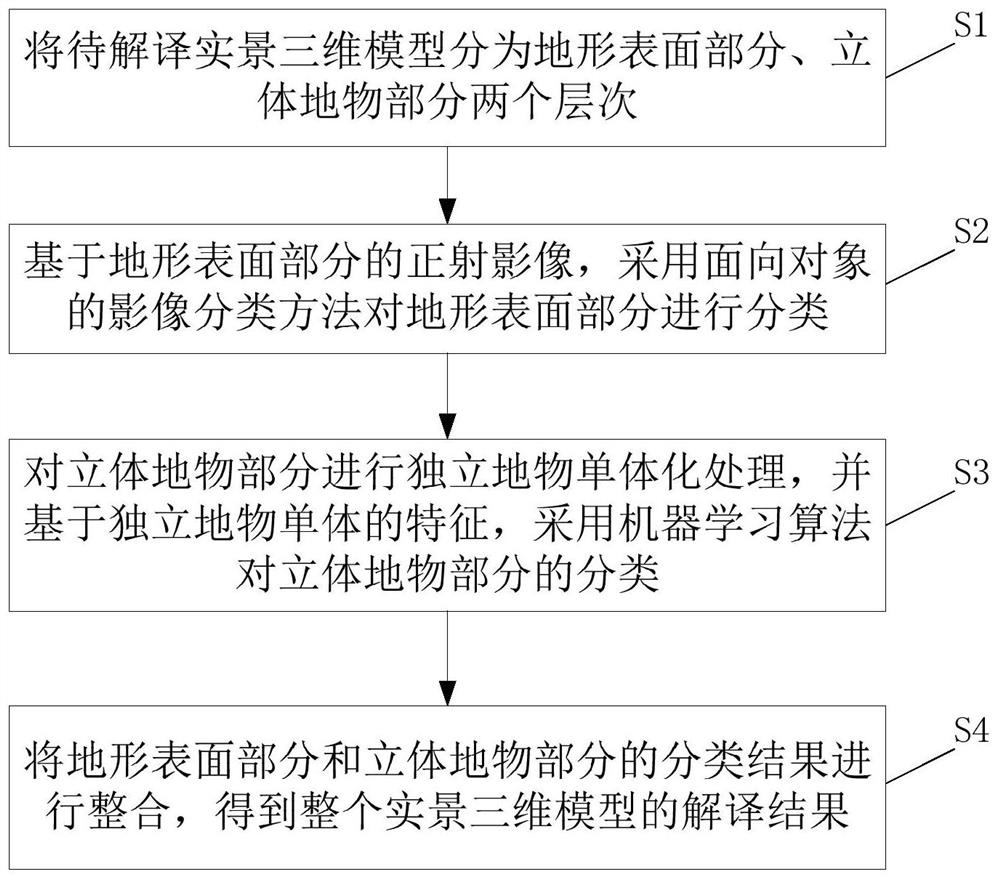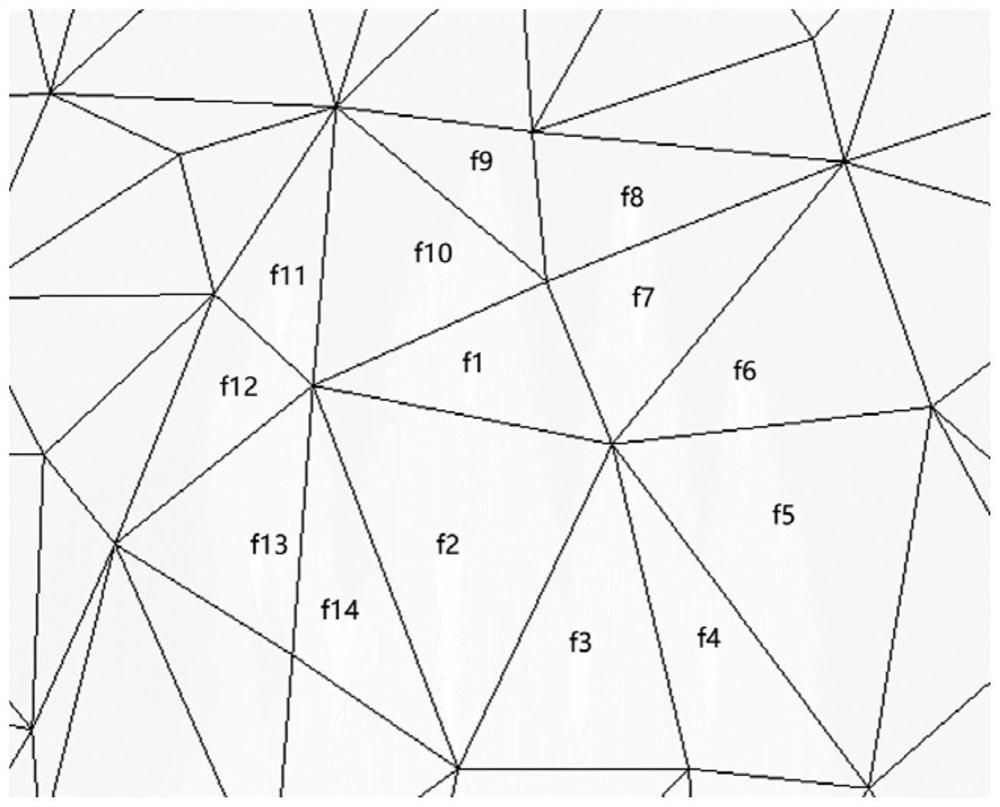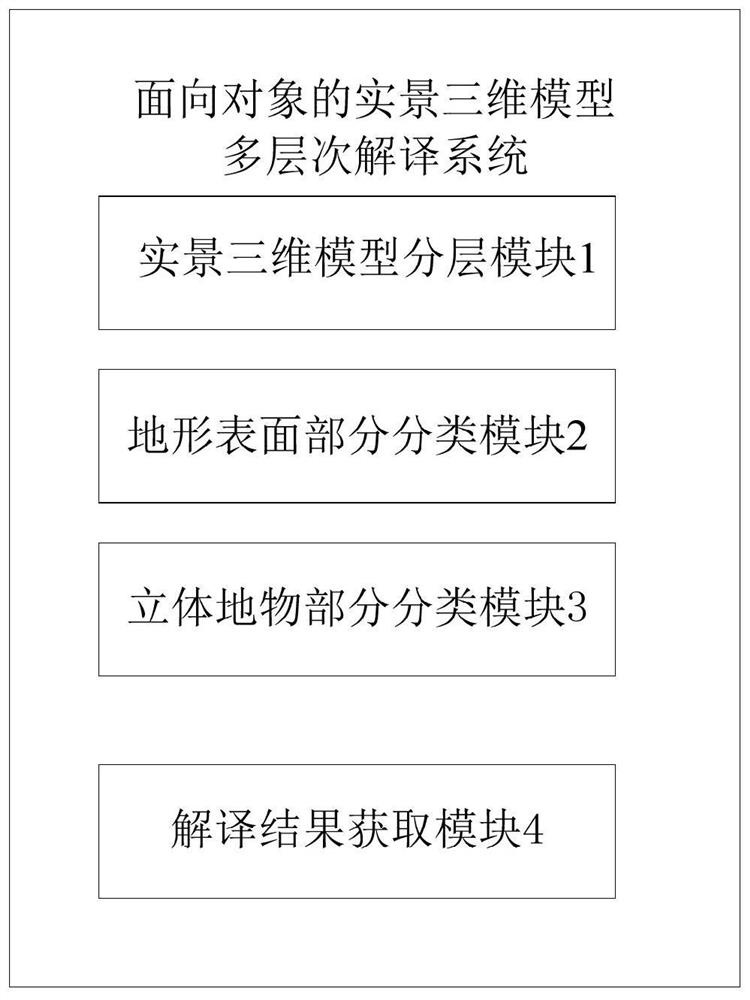Object-oriented multi-level interpretation method and system for live-action three-dimensional model
A three-dimensional model, object-oriented technology, applied in computational models, 3D modeling, character and pattern recognition, etc., can solve problems such as poor classification results and loss, improve accuracy and robustness, and reduce the difficulty of interpretation. , Improve the effect of salt and pepper noise
- Summary
- Abstract
- Description
- Claims
- Application Information
AI Technical Summary
Problems solved by technology
Method used
Image
Examples
Embodiment 1
[0049] An embodiment of the present invention provides an object-oriented multi-level interpretation method for a real-scene 3D model, such as figure 1 shown, including the following steps:
[0050]Step S1: Divide the 3D model of the real scene to be interpreted into two levels: the terrain surface part and the three-dimensional object part. In the embodiment of the present invention, the cloth simulation filter (Cloth Simulation Filter, CSF) algorithm is used to divide the three-dimensional model of the real scene to be interpreted into two levels: the terrain surface part and the three-dimensional object part. The terrain surface part in the embodiment of the invention refers to After removing the ground objects (such as trees, buildings, municipal facilities, etc.) above the ground in the entire real-world 3D model, the relatively undulating areas left behind, such as surface grasslands and gentle slopes, do not block other ground objects when changing the viewing angle Th...
Embodiment 2
[0092] Embodiments of the present invention provide an object-oriented real scene three-dimensional model multi-level interpretation system, such as image 3 shown, including:
[0093] The real-scene 3D model layering module 1 is used to divide the real-scene 3D model to be interpreted into two levels: terrain surface part and three-dimensional object part. This module executes the method described in step S1 in Embodiment 1, which will not be repeated here.
[0094] The terrain surface part classification module 2 is used for classifying the terrain surface part by using an object-oriented image classification method based on the orthophoto image of the terrain surface part. This module executes the method described in step S2 in Embodiment 1, which will not be repeated here.
[0095] The three-dimensional feature part classification module 3 is used to perform independent feature singulation processing on the three-dimensional feature part, and use machine learning algorit...
Embodiment 3
[0099] An embodiment of the present invention provides a computer device, such as Figure 4 As shown, the device may include a processor 51 and a memory 52, wherein the processor 51 and the memory 52 may be connected via a bus or in other ways, Figure 4 Take connection via bus as an example.
[0100] The processor 51 may be a central processing unit (Central Processing Unit, CPU). Processor 51 can also be other general processors, digital signal processor (Digital Signal Processor, DSP), application specific integrated circuit (Application Specific Integrated Circuit, ASIC), field programmable gate array (Field-Programmable Gate Array, FPGA) or Other chips such as programmable logic devices, discrete gate or transistor logic devices, discrete hardware components, or combinations of the above-mentioned types of chips.
[0101] As a non-transitory computer-readable storage medium, the memory 52 can be used to store non-transitory software programs, non-transitory computer-exe...
PUM
 Login to View More
Login to View More Abstract
Description
Claims
Application Information
 Login to View More
Login to View More - R&D Engineer
- R&D Manager
- IP Professional
- Industry Leading Data Capabilities
- Powerful AI technology
- Patent DNA Extraction
Browse by: Latest US Patents, China's latest patents, Technical Efficacy Thesaurus, Application Domain, Technology Topic, Popular Technical Reports.
© 2024 PatSnap. All rights reserved.Legal|Privacy policy|Modern Slavery Act Transparency Statement|Sitemap|About US| Contact US: help@patsnap.com










